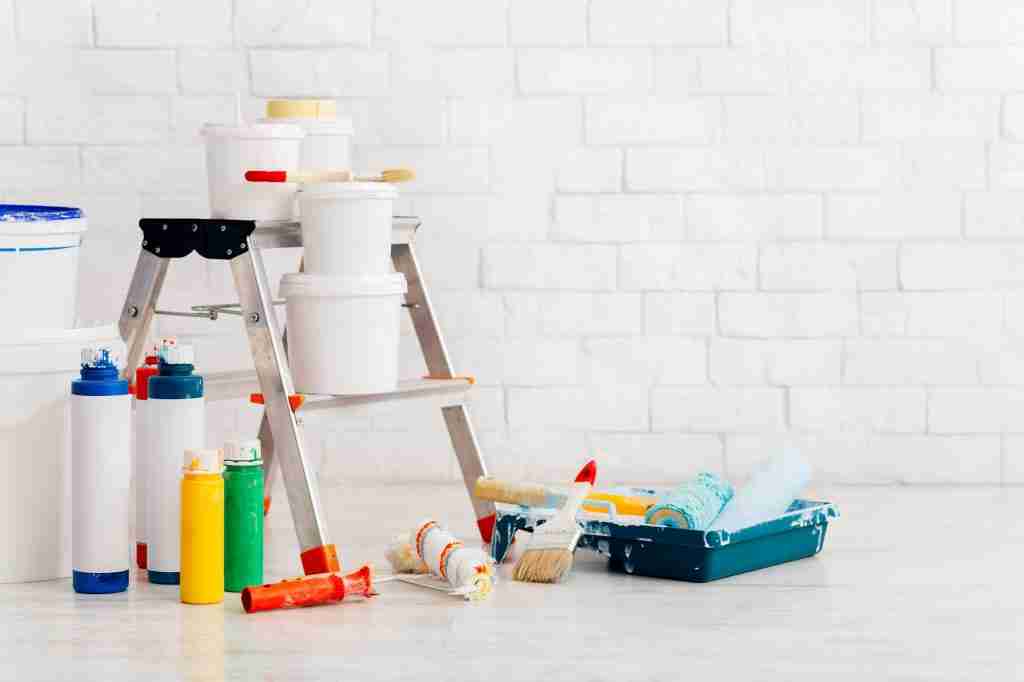There are substantial variations between painting a home that has been damaged by water and painting one that hasn’t. To ensure that the coating looks its best and lasts for a long time after you’ve finished painting, you’ll need to do a little additional prep work on these kinds of surfaces. All the information you need to know about painting after water damage is here.
Clean The Area:- This is essentially the preliminary step in any typical painting process, including water damage repair on walls. Scrub the surface with a clean moist towel to remove any dirt/dust, and then allow the area to dry. You may also engage a water damage service to avoid such concerns if you are unable to do it on your own.

Surface Scraping:- This is the fun part. Grab a paint scraper and start scraping away any bubbles, peeling, or flaking around the edges of the area that needs to be fixed. Then use a wire brush to get rid of any last-minute paint and dirt.
Use a wood filler:- Spread a thin layer of wood filler on your wall using a putty knife that reaches beyond the boundaries of the flood water damage repair. Pro-tip: When applying the filler, bend your putty knife slightly so that you have a flat surface rather than a sharp edge to work with and it is easier to spread the filler in an even layer.
The filler should be dry in a few hours so that the next-to-last stage may be completed.
Sand the Area:-
If you sand too hard, you will reach the wood, forcing a repeat of step 4, but if you sand too lightly, the surface will be uneven. We recommend using fine grit paper and working slowly until the filler layer matches the original paint layer.
Put on a sealer or water-based primer:- This step will make the wall ready for paint. The water-based primer should be used on interior surfaces. It is best to apply this before you apply the paint.
Repaint the affected area:- Once your wall has been well treated — clean, primed, and protected from any water damage — it is time to paint the chosen color. Because paint fades with time, it is difficult to match the new color with the old. In this case, you can simply choose to repaint the whole wall.
Save time by using peel-and-stick disposable paint. This saves time and effort for priming, sealing, and other prep procedures. This will be quicker and easier, allowing you to enjoy your new walls sooner.
The eventual result will be clear. Your neglected and worn-out wall is suddenly welcoming and warm.
How to remove moisture from walls after water damage
Once moisture gets between your walls and paint, it’s hard to get it out. You may believe your walls are dry, but you never know.
Open your home’s doors and windows to speed up the drying process. Fans may also be used to push air towards wet walls.
Also, dehumidifiers will help. It will dry the air as well as the wet walls. Consider removing the baseboards and molding to help in the evaporation process.
When peeling paint appears, can you just cover it up with new paint?
Painting needs a number of preparatory tasks. Prior to applying primer and paint, you will need to apply filler.
However, if you just have a little area of peeling or chipping paint, you may simply brush it off, prime, and paint. As long as the damaged area’s margins are still solid, this is conceivable.
Conclusion
The windy and rainy weather of winter carries with it a lot of moisture. Moisture may leak into your walls when you cuddle up with a warm blanket, ruining the lovely paint job. You’ll see it bubbling, flaking, and peeling while you watch TV.
With only six simple steps, anybody can learn how to repair water-damaged wall paint.

